
Making our own (bokashi) compost activator
November 19, 2019Home » Making our own (bokashi) compost activator
We may have been composting for ages at CAT, but that doesn’t mean there isn’t room to try something different. In November 2019 Fin made a bokashi-like compost activator using basic ingredients from the café which we hope will set our volunteer’s kitchen caddies on a composting fast track.
CAT course tutor Fin who teaches our Compost Toilets and Reedbeds and Waste Water Management courses shares their recipe.
The recipe
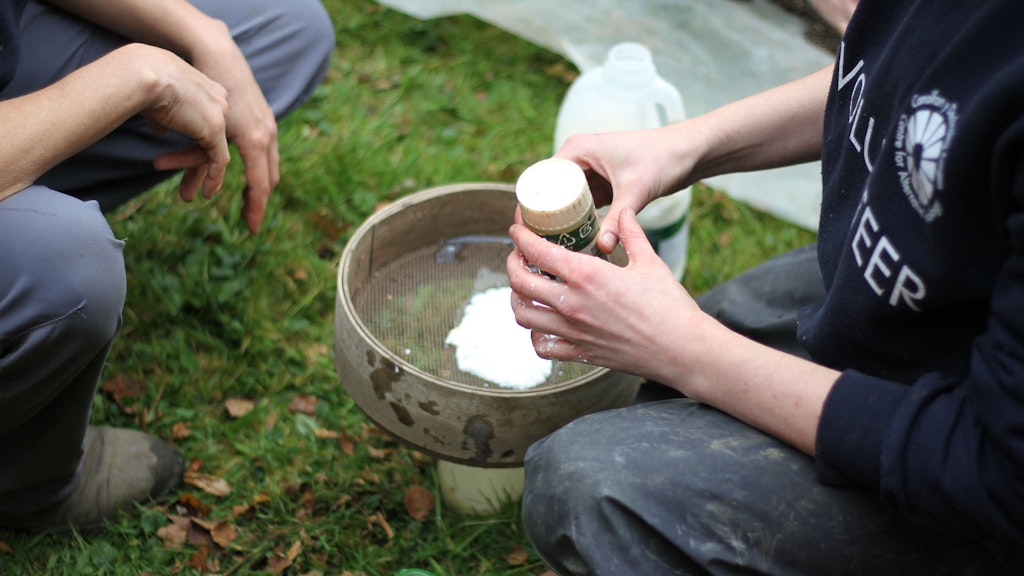
We started by looking at a jar of bokashi bran that has been fermenting in a tupperware for three weeks. It was covered in white fluffy mould, which is a good sign and was expected, especially when making bokashi in this way – using three sources of effective microorganisms or EM, including some local compost which will be full of friendly white mould spores.
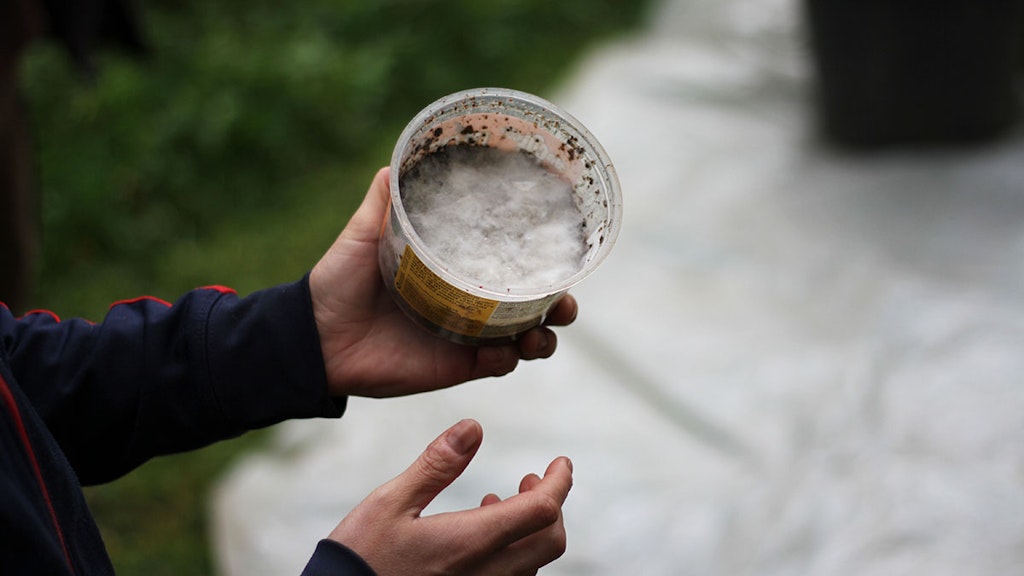
Wet ingredients
Then we started mixing the wet ingredients:
- Equal parts of anaerobic microbial inoculants (lactic serum from curdled milk and rice water from rinsing rice and leaving it for 5 days) and high nutrition carbohydrate rich food stuffs (molasses and brown sugar) for these microbes to feed on.
- Adding water until we have about the same volume of liquid to dry matter.
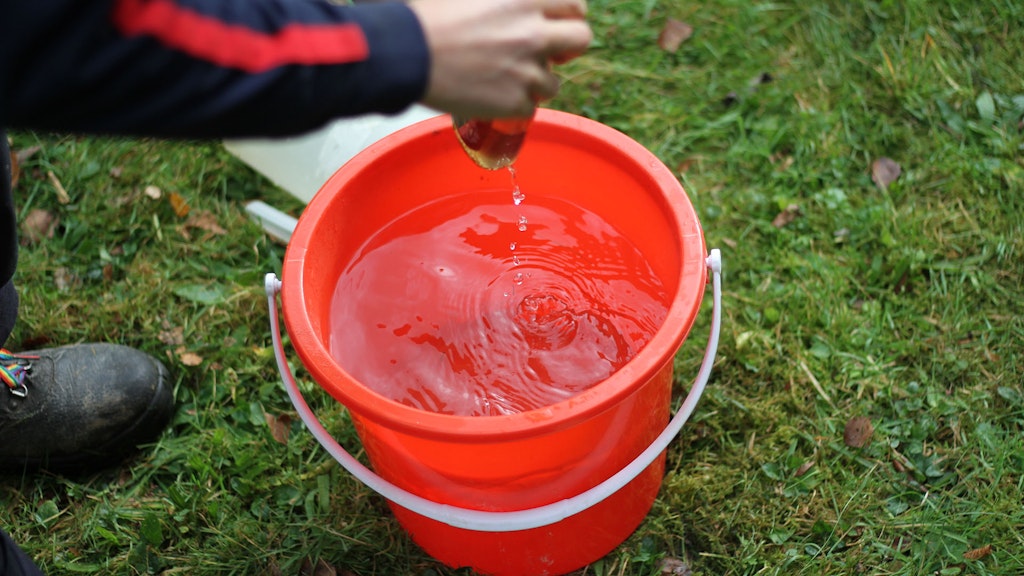
Dry ingredients
And now mixing the dry ingredients:
- Same ratio of 1:1 oat bran flakes and 2 year old leaf mould. The leaves were swept from the floor and had picked up a lot of little pieces of slate so we took the leaf mould through the compost sieve first.
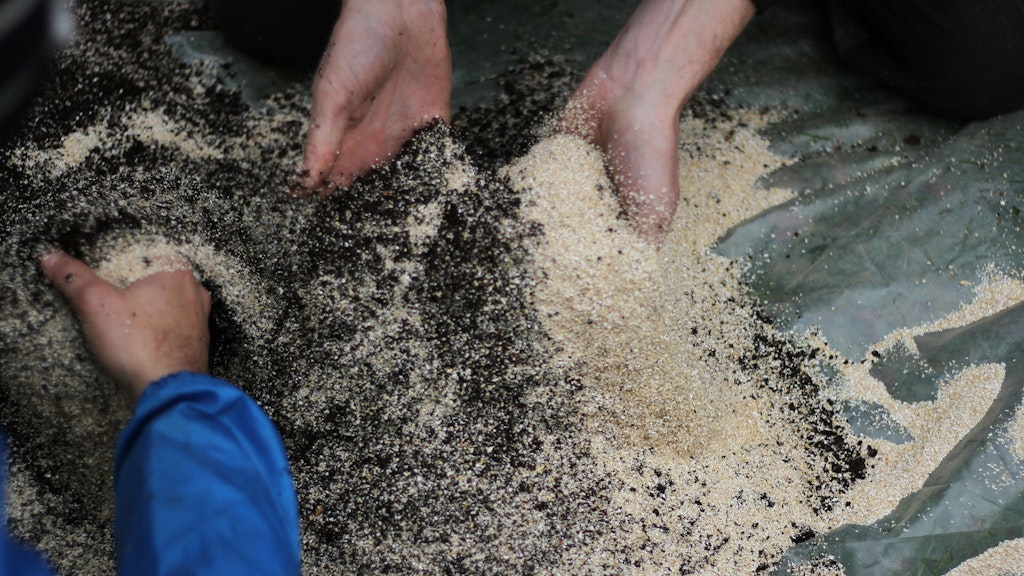
Bringing it all together
Finally, adding the wet to the dry and mixing thoroughly until the mixture passes the squeeze test; if you shape the mix into a ball it should hold together and feel very wet, if water dribbles out – it is too wet.
This is because we want to ensure anaerobic (oxygen depleted) conditions, and saturation achieves this best. So we now want to ram our mixture into a clean container with a lid and leave it in a warm place for 2 weeks where our superheroes of the microbial world will proliferate vigorously. We will then apply a generous handful to the surface of each compost bin we wish to accelerate.
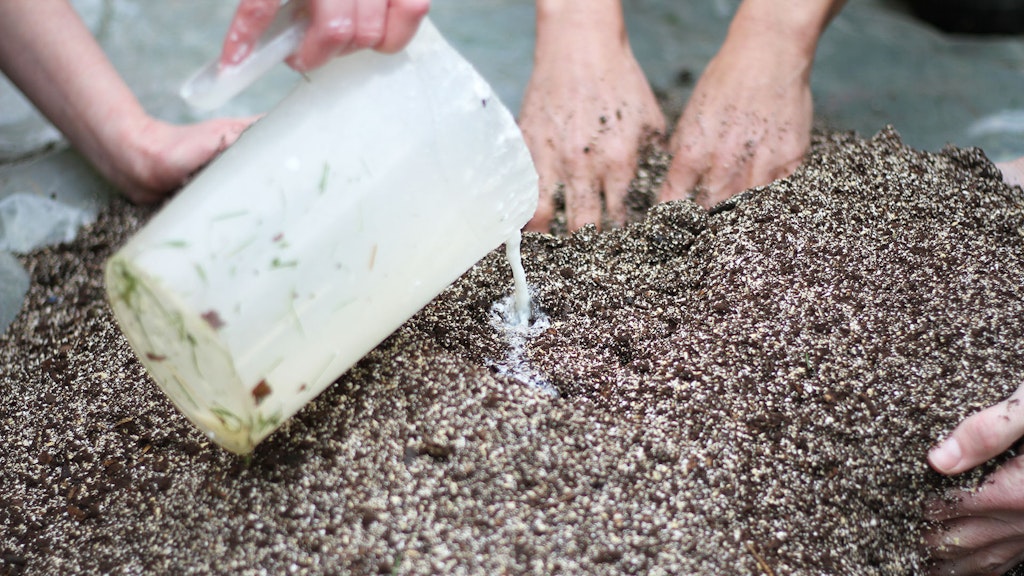
Uses
The main motivation to feed activators to a compost heap is to improve the diversity of the bacteria and yeasts communities that are the primary decomposers of food stuffs, and therefore the quality of end product, which is soil. Some people even add rock dust and seaweed to their activator mix thereby introducing micro nutrients and minerals into the soil.
About the Author
Fin is a BSc in Marine Biology and MSc in Human Ecology working on water resources and ecosystem services at CAT since 2011, teaching and developing short courses, lectures, tours and workshops to engage people in a critical enquiry on human – waste – place relations.
Beyond CAT Fin facilitates the co – design and installation of low impact sanitation solutions for off grid homes, allotments, festivals and camp sites in Wales, Scotland and Europe, most recently collaborations include Phytology, Bethnal Green on an accessible composting toilet for a nature reserve; UCL Bartlett School research project on Pee and Poo for Food, looking at barriers to urban production and use of composted human waste as a fertiliser; Global Gardens Cardiff on a composting toilet for their allotment plot; and The Clearing at Compton Verney, an art project set in post climate collapse adaptation with workshops on Drink the Water and Make a Toilet.
- Gardening and Agriculture
Related Topics
Related news


CAT Conversations: Rachel Calder, CAT graduate
26th September 2024
It takes a village
16th August 2024
